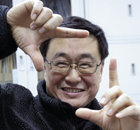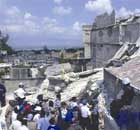Society
Netizens keep digging into tomb ownership
By Lin Shujuan (China Daily)
Updated: 2010-01-15 07:05
 |
Large Medium Small |
Two press conferences and dozens of interviews by experts over the past two weeks have failed to quiet the unprecedented public debate on the ownership of an ancient tomb discovered in Anyang, Henan province.
Archaeological officials believe the tomb belongs to Cao Cao (AD 155 to 220), a legendary ruler during China's most dramatic historical period, the Three Kingdoms (AD 220 to 280). But skepticism spread like wildfire soon after the discovery was revealed to the public on Dec 7.
The situation hasn't changed for the better despite yesterday's live-broadcast seminar hosted by the Institute of Archaeology under the Chinese Academy of Social Sciences.
"We believe if the public can see what we see, and share our reasoning process based on our expertise, they will come to understand how we archaeologists have come to the conclusion that the tomb belongs to Cao," Wang Wei, director of the institute, said yesterday on the sideline of the seminar.
But things did not go completely as Wang expected.
The seminar, consisting of experts who are all colleagues of Liu Qingzhu, the most-cited expert responsible for the disputed tomb discovery, concluded that "based on what we've got, we are almost sure that the tomb belongs to Cao. But we can't call such a conclusion a final one because excavation has just been completed and comprehensive research on the tomb has just started."
While some found the conclusion more acceptable as it showed respect for public opinion, others found it enraging.
"The other day they were still talking like they were 100 percent sure. And now they are saying they can't call it 'final'," said Zhu Ying, a citizen from Shangrao, Jiangxi province. "How can we trust experts like that?"
Skepticism still exists among the public and netizens frequently compare the case to the popular "South China tiger photo scandal" in 2007.
That case was about a farmer who took a photograph of a supposedly extinct wild South China tiger, which was revealed to be a fake after netizens' scrutinized the vested interests that the photographer and related forestry authority had in the photo.
"It is like history repeating itself," commented a netizen called Lao Hu, or Tiger, from Tieling, Liaoning province.
Gao Xing, director of the Institute of Vertebrate Paleontology and Paleoanthropology under the Chinese Academy of Sciences, said as an archaeologist he trusted his peer's expertise to arrive at a valid conclusion.
But he thinks the current controversy about the tomb is not just a result of public ignorance about archaeology.
"Archaeology is a very academic specialization and the public usually relies on experts' opinions on a discovery," Gao said. "Now the public's distrust is obvious."
Fueling the skepticism, recent media reports frequently cite an expert saying that the tomb could bring Henan province 420 million yuan in tourism revenue.
The Guangzhou-based Southern Weekend went even deeper, revealing how a local archaeological official wished to discover a king's tomb so that it could boost local tourism like the terracotta army of Emperor Qin Shihuang boosted the tourism industry in Xi'an, Shaanxi province.
The possible discovery of Cao's tomb has attracted the local government's interest with an investment of more than 6 million yuan for its excavation. The annual total budget for cultural relic protection for the whole province of Henan is only 8.8 million yuan.
"The fact that the archaeological excavation is mainly sponsored by the local government has undermined the credibility of academics," Gao said.












